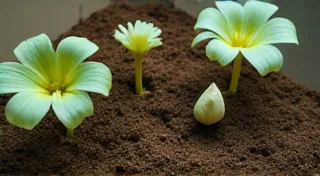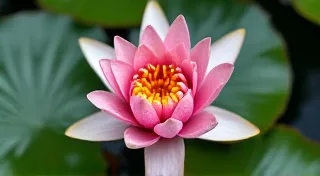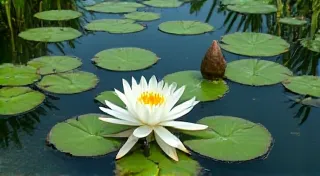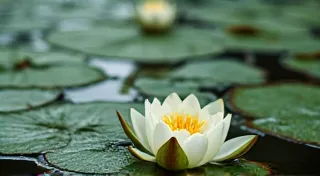Understanding Water Lily Bloom Cycles
Water lilies are beloved for their beautiful blooms, transforming ponds into tranquil havens. But experiencing these stunning displays consistently can be a challenge. Understanding the factors influencing their bloom cycles is key to maximizing their flowering potential. This guide delves into what dictates when and how often your water lilies bloom, and offers practical tips to encourage more blooms.
The Basics: What Drives Water Lily Blooms?
Water lily blooming isn't random. Several interconnected factors play crucial roles. Let's examine the main ones:
- Light: This is arguably the most important factor. Water lilies are sun-loving plants. They generally need a minimum of 6-8 hours of direct sunlight daily. Insufficient light will dramatically reduce blooming or even halt it altogether.
- Temperature: Water temperature significantly affects bloom cycles. Most water lilies have distinct seasonal bloom patterns tied to water temperature. Tropical varieties thrive in warmer water (70°F+), typically blooming almost continuously during summer. Hardy varieties prefer slightly cooler temperatures.
- Nutrient Availability: Water lilies need adequate nutrients to support vigorous growth and blooming. While they can absorb nutrients from the water, they often benefit from supplemental feeding.
- Plant Maturity: Younger water lilies, often called “juveniles,” typically don’t bloom as reliably as more mature plants. It can take 2-3 years for a newly planted water lily to establish itself enough to bloom consistently.
- Water Lily Variety: Different varieties bloom at different times and have different requirements. Knowing the specific type of water lily you have (tropical or hardy) is essential.
- Pond Environment: The overall health and balance of your pond ecosystem directly impacts your water lilies. Factors like water clarity, oxygen levels, and the presence of competing plants all contribute to their ability to thrive. Maintaining a healthy pond means providing the best conditions for your lilies to flourish.
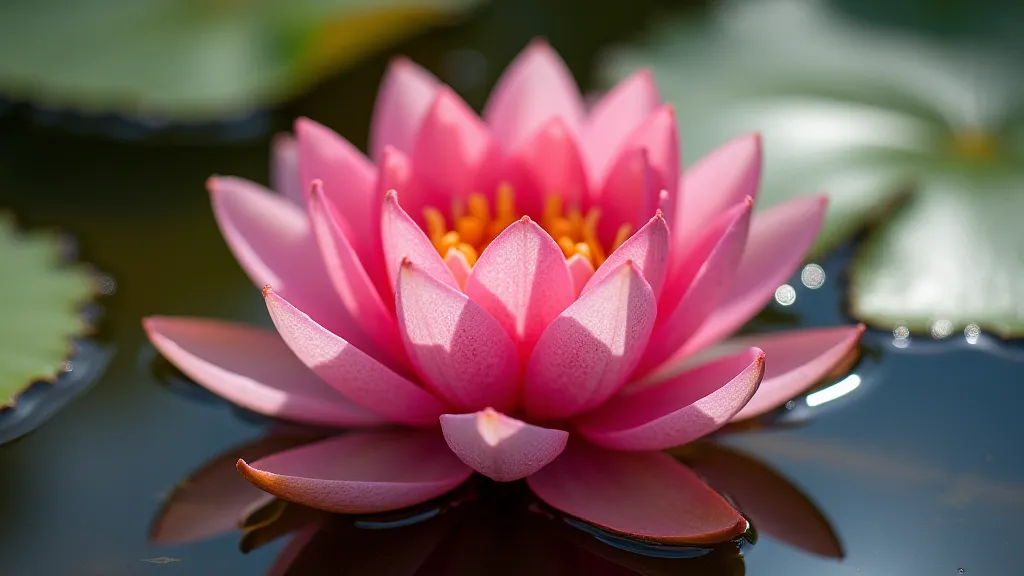
Bloom Cycle Variations: Tropical vs. Hardy
The bloom cycle differences between tropical and hardy water lilies are notable:
Tropical Water Lilies
Tropical water lilies are generally continuous bloomers during the warm summer months. They initiate blooming when water temperatures consistently reach 70°F (21°C) and continue until the water cools down again. These varieties often produce large, showy flowers and are prized for their extended blooming period. They are not cold-hardy and must be overwintered indoors in colder climates. To ensure these beauties truly shine, it's important to consider the entire pond environment. Are competing plants stealing resources? Is the water clarity impacting light penetration? Creating a truly balanced ecosystem, like in companion plants for water lilies, can make a world of difference.
Hardy Water Lilies
Hardy water lilies have a more defined bloom season, typically beginning in late spring or early summer and continuing into late summer or early fall. They often have a shorter blooming period than tropical varieties and their flowers tend to be smaller. Hardy water lilies are adapted to colder temperatures and are more resistant to frost. The depth of your pond plays a key role in keeping water temperatures stable for hardy lilies, preventing those sudden fluctuations that can stress the plants. Finding the perfect pond depth for water lilies is crucial to their health and bloom cycle.
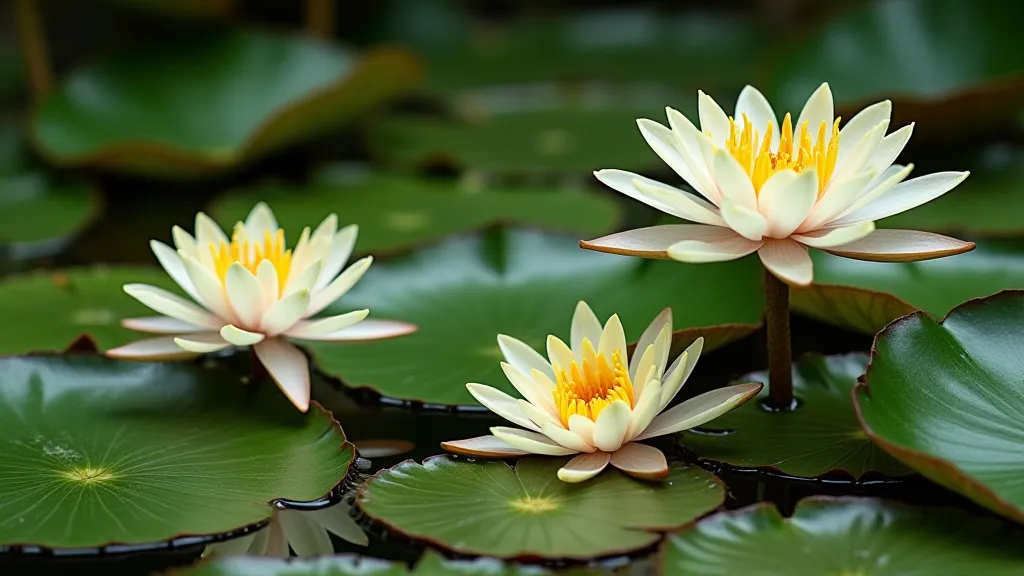
Encouraging More Blooms: Practical Tips
Here are some practical steps you can take to encourage more blooms from your water lilies:
- Ensure Adequate Sunlight: Relocate your water lily if it's shaded by trees or other structures.
- Maintain Optimal Water Temperature: For tropical varieties, consider using a pond heater in cooler climates. For hardy varieties, ensure adequate water depth to prevent rapid temperature fluctuations.
- Fertilize Regularly: Use a water lily-specific fertilizer according to package instructions. Start fertilizing when new leaves appear in spring and continue throughout the growing season. Be mindful of algae growth, as over-fertilization can exacerbate the issue.
- Control Algae: Excessive algae can compete with water lilies for nutrients and light. Manage algae through mechanical removal, beneficial bacteria, or other appropriate methods. A balanced pond is a blooming pond!
- Repot Regularly: Repot your water lily every 2-3 years to provide fresh soil and prevent root-bound conditions. This also allows you to refresh the nutrients surrounding the roots.
- Thin Out Leaves (if necessary): Mature plants can produce a lot of leaves. While this is good for overall health, an excessive number of leaves can shade the flowers. Prune some of the older, yellowing leaves to maximize light reaching the blooms.
- Consider Hybridization (for enthusiasts): For those interested in experimenting, understanding the fascinating world of water lily hybridization can unlock entirely new bloom characteristics and color variations. This allows you to tailor your pond to your exact aesthetic desires.
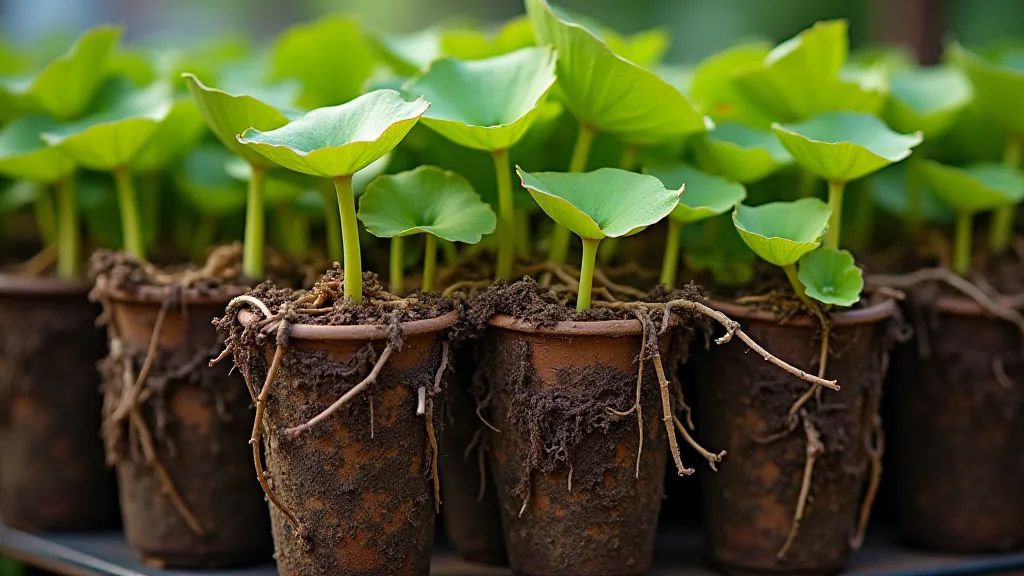
Troubleshooting Bloom Issues
If you’re not seeing the blooms you expect, consider these potential issues:
- Insufficient Light: This is the most common culprit.
- Nutrient Deficiency: Try a different fertilizer or increase the frequency of applications.
- Plant Stress: Check for signs of disease or pests.
- Improper Planting Depth: Ensure the water lily is planted at the correct depth for its variety.
- Competition for Resources: Overcrowding or the presence of invasive plant species can stifle water lily growth and blooming. Careful planning and regular maintenance are essential.
- Water Quality Issues: Poor water quality, such as high levels of pollutants or pH imbalances, can negatively impact water lily health. Regular water testing and appropriate corrective measures are crucial.
Beyond the basic care tips, a critical aspect of successful water lily cultivation is understanding their genetic makeup. Different varieties possess unique characteristics, impacting their bloom timing, flower size, and overall resilience. Exploring the science behind water lily hybridization can offer deeper insights into these differences.
By understanding the factors that influence water lily bloom cycles and implementing these practical tips, you can maximize your chances of enjoying a beautiful display of water lily blossoms throughout the growing season. Remember, a thriving pond is a harmonious ecosystem, and your water lilies are a vital part of it.
